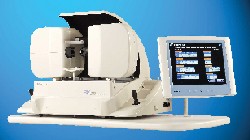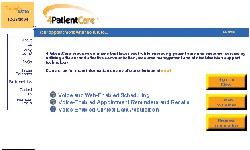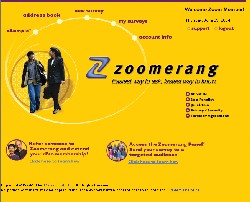Much of our ophthalmic equipment changes at the same pace as computers and cell phones. Yet, with all this change, there are still two underlying fundamental questions that need to be answered when deciding whether to add new technology to your practice:
 |
1. Will it benefit my patients?
2. Will it benefit my practice?
Seemingly straightforward, these two questions have many branches to them.
In terms of the first question, the branches are:
- How will it benefit my patients?
- Is it a benefit that I dont offer them now?
- Is the benefit immediate?
- Will the benefit to my practice be only financial (the most commonly thought of benefit)?
- Are there are other reasons to consider the equipment?
Pre-Exam Technology
We think of optometric equipment as having a core purpose in the clinical side of our practices. But, new technology can help us on the practice development side too.
Interactive web sites are one innovation of new technology that no modern practice should be without. For instance, the web site www.4patientcare.com offers a web scheduler that integrates with your desktop practice management scheduler. This web scheduler allows patients to set up their own appointments, which can be synched to your office schedulerall without staff involvement. In addition, this same software can confirm patients appointments and notify them when their glasses are ready to be picked up.
|
|
| Web sites, such as www.4PatientCare.com, are examples of pre-appointment technology that enables your staff to concentrate on other tasks. |
While this technology is not intended to replace your staff, it can certainly allow you to use their skills more effectively, which makes the return investment on these web products profound.
Exam Technology
The following is a partial list of newer clinical equipment that is beneficial to both your patients and your practice.
Digital imaging of the anterior and posterior segments is becoming mainstream. Technology, such as digital fundus cameras and their software, now exists that allows the capturing and archiving of images without the use of expensive film. The result is that an image that used to cost $1.00 per eye now costs less than one cent per eye. In addition, machines such as the Opto- map (Optos) allow the peripheral retina to be viewed, and in some cases, the inconvenience of a dilation can be avoidedan obvious patient and practice benefit. Another plus? Documentation of successive visits now involves only a few mouse clicks, which is a great time saving measure.
Corneal topography is also rapidly becoming commonplace. Topographers with built-in pupil-lographers that map higher-order aberrations and assist with complex contact lens fittings are now within reach of even the smallest practices, due to their affordable pricing. Those who currently use a
topographer routinely say, I dont know how I ever practiced without it.
The next generation of autorefractors has also arrived with the introduction of the Ophthonix Z-View Aberrometer (Ophthonix and Optical Connection Inc.). The instrument uses a laser beam to map your patients low-order and high-order aberration measurements in just seconds. These measurements are then used to make either a customized pair of spectacles or contact lenses. This is truly breakthrough technology that has profound vision benefits for patients. The obvious return on investment occurs in efficiency of operations and with the delivery of the vision correction products the instrument helps to produce.
 |
| Topcon"s BV-1000 is a binocular, subjective autorefractor that can save the practitioner time without compromising the quality of care |
Another large category of instruments that needs to be discussed in the context of patient and practice benefits is the latest offering in the category of scanning laser diagnostic tools for optic nerve and retinal imaging, specifically as they relate to glaucoma.
New software packages do one-minute glaucoma screenings with specificity and sensitivity that is a quantum leap ahead of the previous IOP measurement screening. In fact, some glaucoma experts argue that if we were to rely solely on IOP meas-urements to diagnose glaucoma (not that any of us would), we would make a correct diagnosis just over 50% of the time!1 The newest retinal nerve fiber layer analyzers are pushing that number to over 90% of the time, and technicians can reliably perform the testing.2
The benefits of these devices to patients are obvious, as many studies (the Early Manifest Glaucoma Trial, for example) show that the sooner glaucoma is diagnosed and treated, the better the ultimate outcome. In addition, there are obvious financial benefits for practices because patients are now more in the fold due to their earlier diagnosis and need for additional testing and monitoring. But, beyond this obvious practice benefit is a hidden practice-building one. Patients who have serious condi-tions like glaucoma and are diagnosed early and treated appropriately, invariably become practice evangelists, and generate significant numbers of new referrals.
Post-Exam Technology
Technology also can aid in patient education. Professionally-produced computer animation software can be used to explain dif- ficult concepts and procedures as well as distill our own explanations from minutes to seconds. One web site that creates these animations is www.eyemaginations.com. This technology can also be placed on your web site, so patients can review your recommendations or view the animation with family members. This type of software adds valuable time to your busy day without rushing you through the critical phase of patient education.
Should your patient need glasses or a new prescription, digital imaging and virtual inventory of eyeglasses is a great way to offer value and decrease operating expenses. These new technologies (www.eyeweb.com, for example) offer significant time-saving and inventory reduction capability and are amazing show-and-tell devices that can demonstrate premium lens features better than a display stand. They also save space and can accelerate the frame selection processa feature appreciated by both patients and opticians.
Just as the Internet can introduce a patient to your practice, it can complete the process by following up with the patient. Affordable web products are available that can send out automatic thank you notices, patient surveys and the like. Such web sites include www.eyecarepro.net, www.constantcontact.com and www.zoomerang.com. With the patient now at home, this same web technology can be used to stay in contact with patients via targeted e-mails and reminders.
|
|
| Web sites, such as www.zoomerang.com, enable you to send your patients surveys, and you can analyze the results in real time. |
Dr. Gerber is the president and founder of The Power Practice, a consulting company that specializes in making doctors more profitable. He is also a frequent speaker and writer. You can reach him at www.powerpractice.com. Dr. Gerber has no financial interest in any of the products or companies mentioned.
- Wong EY, Keeffe JE, Rait JL,et al. Detection of undiagnosed glaucoma by eye health professionals. Ophthalmology 2004 Aug;111(8):1508-14.
- Bonomi L, Marchini G, Marraffa M, Morbio R. The
relationship between intraocular pressure and glaucoma in a defined population. Data from the Egna-Neumarkt Glaucoma Study. Ophthalmologica 2001 Jan-Feb;215(1):34-8.



